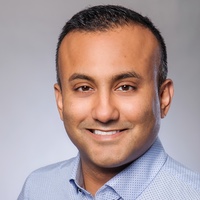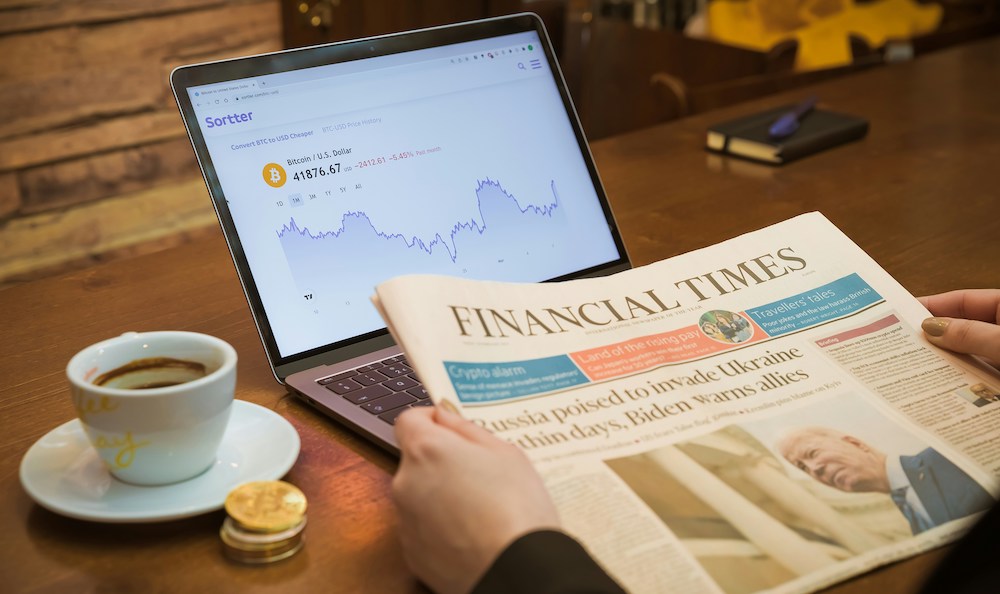Earlier this summer, video ad tech company VideoAmp acquired IronGrid Data Services and announced a partnership with automatic content recognition (ACR) business Inscape to help flesh out its cross-screen measurement and planning software solutions. In this Q&A VideoAmp chief strategy officer Jay Prasad and VP of TV data partnerships Randy Laughlin (formerly IronGrid President & Co-Founder) explain the motivation behind the IronGrid acquisition, and discuss whether smart-TV makers can become big players in the OTT space.
Congratulations on the acquisition. What was the rationale behind buying IronGrid, and how will it boost VideoAmp’s proposition?
 For VideoAmp, our mission is to unify linear TV and digital video advertising and acquiring IronGrid is a major strategic step forward in that direction. This acquisition further strengthens our planning and measurement software solutions as it will enhance our ability to process and activate set top box and smart TV data sets. There are a few different applications but we’re focused mostly on targeted, index-based advertising, programmatic insertion and true cross-screen measurement and attribution. There’s a huge amount of demand for advanced TV advertising, so the need for clean, reliable, household-level TV viewership data has never been higher. We’re pleased to be one of the companies helping to push the industry forward.
For VideoAmp, our mission is to unify linear TV and digital video advertising and acquiring IronGrid is a major strategic step forward in that direction. This acquisition further strengthens our planning and measurement software solutions as it will enhance our ability to process and activate set top box and smart TV data sets. There are a few different applications but we’re focused mostly on targeted, index-based advertising, programmatic insertion and true cross-screen measurement and attribution. There’s a huge amount of demand for advanced TV advertising, so the need for clean, reliable, household-level TV viewership data has never been higher. We’re pleased to be one of the companies helping to push the industry forward.
Would you classify IronGrid as a technology company, a services company or both?
 IronGrid was a big data technology firm that provided technology platforms to marketers, as well as media companies with access to secure, anonymised, and privacy-compliant TV Viewership data from the nation’s leading multichannel video programming distributors (MVPDs) and connected TV providers. The technology that IronGrid brings to the table will help bring close operator relationships to VideoAmp including four of the nation’s leading MVPDs, as well as deep expertise in TV audience data processing, audience modeling, and predictive analytics leveraging both set-top box and ACR data.
IronGrid was a big data technology firm that provided technology platforms to marketers, as well as media companies with access to secure, anonymised, and privacy-compliant TV Viewership data from the nation’s leading multichannel video programming distributors (MVPDs) and connected TV providers. The technology that IronGrid brings to the table will help bring close operator relationships to VideoAmp including four of the nation’s leading MVPDs, as well as deep expertise in TV audience data processing, audience modeling, and predictive analytics leveraging both set-top box and ACR data.
VideoAmp also announced a partnership with Inscape, a subsidiary of VIZIO. In the early days of connected TV, many believed the TV set manufacturers were going to dominate the market but that’s failed to come to fruition. Inscape are one of the more interesting smart TV propositions; can you explain what they will bring to VideoAmp, and do you think the smart TV manufacturers still have an opportunity to become more influential players in the OTT market?

For us the Inscape partnership is part of our ongoing strategy to keep building a highly-enriched TV viewership data set. The ability to work directly with a manufacturer who can give us the raw data, so our own modelling strategies can be applied to that data, is important. It’s also very low latency, which means you can do things like smart retargeting if you have a user graph connected to a household. It’s a nice large data set within the US.
I think smart TVs have a couple of opportunities in the OTT market. Smart TVs can become a new source of really valuable data so traditional television can become more efficient, targeted and addressable. As more people buy smart TVs, as they use these directly to access apps, then they will play a key role in being the gateway to OTT services.
Also on traditional live linear TV, we’re seeing more capabilities of smart TV makers to do live ad replacement. Even though audiences are watching a lot more on-demand content, most OTT services still have a linear component. On those live streams, the ability of smart TV’s to do live ad replacement represents a powerful now opportunity for smart TVs to have an impact in the OTT world.
Irongrid has data that covers in excess of 8 million households, how do you obtain that data and how can it be integrated into TV advertising?
 Marketers and media buyers want to deliver better TV advertising— meaning more personally relevant, engaging, and thereby effective. This requires everything from being able to effectively measure the performance of each TV ad campaign, to being able to plan and buy next year’s TV upfront and digital video newfront with confidence. They want to successfully target an audience to hit brands’ sales goals without wasting half of the budget by either bombarding or entirely missing key audiences. They also want to measure the impact that they had — with multi-touch attribution that makes clear how TV ads performed in inspiring consumers to take action, and to improve on that performance over time. IronGrid’s data engineers and data processing experts have been working with household level TV Viewership data for more than 10 years providing Advertisers, TV Programmers and Network Operators with secure, anonymized, and privacy-compliant consumer data they can use to improve advertising performance and optimize media investment across all screens.
Marketers and media buyers want to deliver better TV advertising— meaning more personally relevant, engaging, and thereby effective. This requires everything from being able to effectively measure the performance of each TV ad campaign, to being able to plan and buy next year’s TV upfront and digital video newfront with confidence. They want to successfully target an audience to hit brands’ sales goals without wasting half of the budget by either bombarding or entirely missing key audiences. They also want to measure the impact that they had — with multi-touch attribution that makes clear how TV ads performed in inspiring consumers to take action, and to improve on that performance over time. IronGrid’s data engineers and data processing experts have been working with household level TV Viewership data for more than 10 years providing Advertisers, TV Programmers and Network Operators with secure, anonymized, and privacy-compliant consumer data they can use to improve advertising performance and optimize media investment across all screens.
Where does the majority of VideoAmp’s business come from at the moment, agencies or directly from brands?
 Our current suite of products in the US, like linear and cross-screen planning and the ability to measure and add data segments to different campaigns, has been predominantly agency driven. We’re also doing some proofs of concept for TV programmers around measurement and use of our cross-screen data measurement. Plus IronGrid, works with cable operators, so we’ve now got a handful of cable operator clients as well.
Our current suite of products in the US, like linear and cross-screen planning and the ability to measure and add data segments to different campaigns, has been predominantly agency driven. We’re also doing some proofs of concept for TV programmers around measurement and use of our cross-screen data measurement. Plus IronGrid, works with cable operators, so we’ve now got a handful of cable operator clients as well.
I think our cross-screen measurement platform that we plan to launch in Q4 will have a lot of appeal to brands directly. Brand now have martech stacks within their walls, where they have their DMP [data management platform], their CRM [customer relationship management] system, and now the latest thing is a CDP [customer data platform] – and being able to show a brand how media performs against actual customer segments I think will be a pretty interesting value proposition. And since a lot of that data lives inside the brands’ walls and they don’t share it outside those walls, we expect that to be a growing customer segment for this part of the measurement stack.
Are there any plans to integrate VideoAmp more deeply into RTL Group?
 We’re going to be focusing our partnership with RTL on the Netherlands as a proving ground for some concepts that they’ve been working on, and we’ll be working very closely with SpotX as part of that. There are going to be announcements coming out in around October to do with these specific plans. But generally VideoAmp is going to be a technology provider and an expertise provider for bringing screens together,and will be helping RTL craft new go-to-market offerings as they move to have more direct-deal relationships with brands and agencies, even in the programmatic space.
We’re going to be focusing our partnership with RTL on the Netherlands as a proving ground for some concepts that they’ve been working on, and we’ll be working very closely with SpotX as part of that. There are going to be announcements coming out in around October to do with these specific plans. But generally VideoAmp is going to be a technology provider and an expertise provider for bringing screens together,and will be helping RTL craft new go-to-market offerings as they move to have more direct-deal relationships with brands and agencies, even in the programmatic space.
Has GDPR affected the way VideoAmp views the European market? Are there still opportunities there or has operating in Europe become less attractive?

I think there’s still a lot of real-time learning going on around GDPR and how it applies. We’re working with RTL, one of our partners, to understand what it means for us. So for example, if our technology is within the RTL stack, and RTL has the direct relationship with the customer, it seems that makes VideoAmp much more a piece of a media company’s operations than a third party processor of data. But I think that’s the component that we still need to understand. If we are acting as an independent processor, what is that capability within GDPR? I still don’t think we have an answer to that, but it’s something we’re exploring.
In terms of our opportunities in Europe, from what I see connectivity between screens to create a more holistic advertising and distribution market for premium video content is still very much of interest across Europe. And I think it has to be, because if the traditional media market can’t act as a platform, then how can it compete with the likes of Google and Amazon? I think there needs to be some strategic thinking within the GDPR framework around how TV can act as a platform, and VideoAmp plans to be a part of that conversation.




